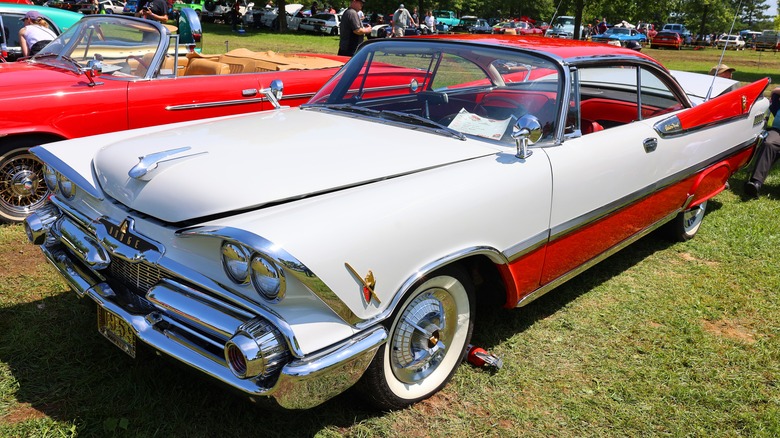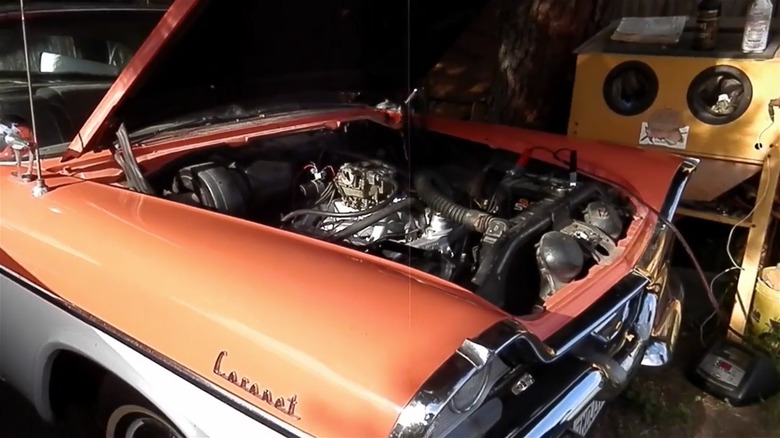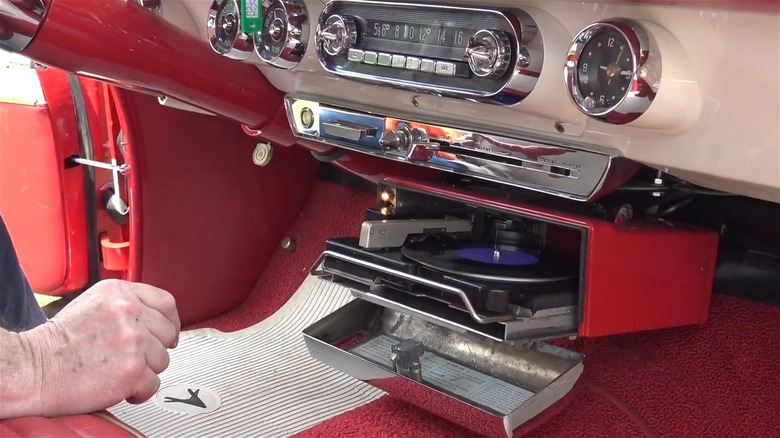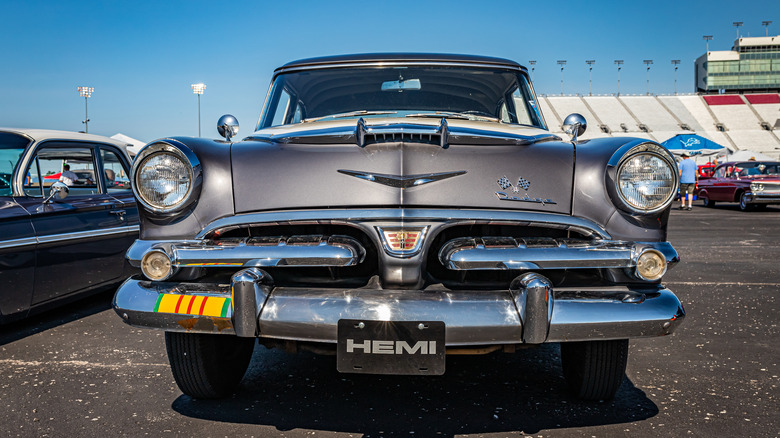What Made The Dodge D-500 So Special And What Does One Go For Today?
The 50s were an influential time in the automobile industry, where a greater emphasis was put on power and visual esthetics like never before. The body designs coming out of that era showcased elements like exaggerated fins, incorporated lots of chrome, and came in a series of bright colors. Not wanting to be outdone by the likes of General Motors or Ford, Dodge offered several models including the Coronet, Royal, Custom Royal, and more. One of the automakers vehicles was dedicated to performance and named the D-500.
There were many aspects of the Dodge D-500 that made it unique including its legendary first-generation Hemi engine, the number of performance records it shattered, and the cutting-edge audio system from Chrysler that offered listeners something they had never heard before, Highway Hi-Fi. While the Highway Hi-Fi system was impressive for its time, it was only one entry in the brief history of in-car record players. If you want to add this special car to your collection, be prepared for the challenge of finding one for sale, and expect to pay upwards of $50,000 or more.
The Dodge Red Ram and D-500 records
The name "Hemi" wouldn't be used for almost a decade after the D-500 debuted in 1956. While it wasn't the first car to incorporate a uniquely shaped combustion chamber, the D-500 was among what is considered the first generation of the iconic Hemi engine. The 315 cubic-inch V8 was called a "Red Ram" and was capable of 260 horsepower, with 330-pound feet of torque. The Dodge D-500 also featured a four-barrel carburetor, which helped set the car apart from an industry full of V8 engines.
Dodge set out to craft the quickest production car for 1956, and wanted to prove it by putting the D-500 through its paces. The Bonneville salt flats, an area popular for those attempting to reach record speeds, hosted the D-500 for a grueling series of tests over the course of two weeks. Fortunately for Dodge, their performance car not only handled the challenge with ease, the D-500 made history with over 300 new records.
Vinyl like never before
AM radio had been around since the turn of the 20th century, with 40% of households by 1930 owning one, per RadioConnection.com. FM radio became widely available in the 1950s for in-car entertainment during travel. However, there were advertisements and a lack of choice in terms of songs or artists that received air time. Drivers were eager to have more freedom over their music, and automakers set out to bring vinyl records, which was the only audio medium available, into the vehicle for the first time.
The Highway Hi-Fi system isn't just a portable record player, it created a unique format that allowed for up to one hour of music on each side of the record. At that time, a typical record could hold around 45 minutes of audio, where as a Highway Hi-Fi record could manage two hours total. The longer format made the challenges of swapping out records while driving less of a concern. Unfortunately, the new Highway Hi-Fi format meant drivers had to purchase the uniquely formatted records for the system to work and couldn't use it with the standard vinyl. Not everyone in the music industry would cooperate, so options were limited with major musical acts unavailable for the Highway Hi-Fi system.
Rare and expensive
For those looking to own this piece of automotive history, its exceedingly rare nowadays, so opportunities are few and far between. Currently, no 1956 D-500s are for sale among the myriads of auction sites who specialize in classic cars. According to RM Sotheby's, a 1957 Dodge Custom Royal Lancer 'Super D-500' Coupe sold back in 2015 for $49,500. You'll have better luck focusing on the other models outside of the D-500 such as the 1955-1959 Dodge Custom Royal for example, which has seen 10 sales over the last year.
If you manage to find this rare gem on sale, you'll want to avoid common mistakes when buying a classic car. Unfortunately, the more time that passes, the less likely you are to find salvageable models from the 1950s. One fortunate owner of a 1958 Dodge Custom Royal Super D-500, was able to get ahold of it in the mid-80s and explained that D-500s are extremely limited in number today.



